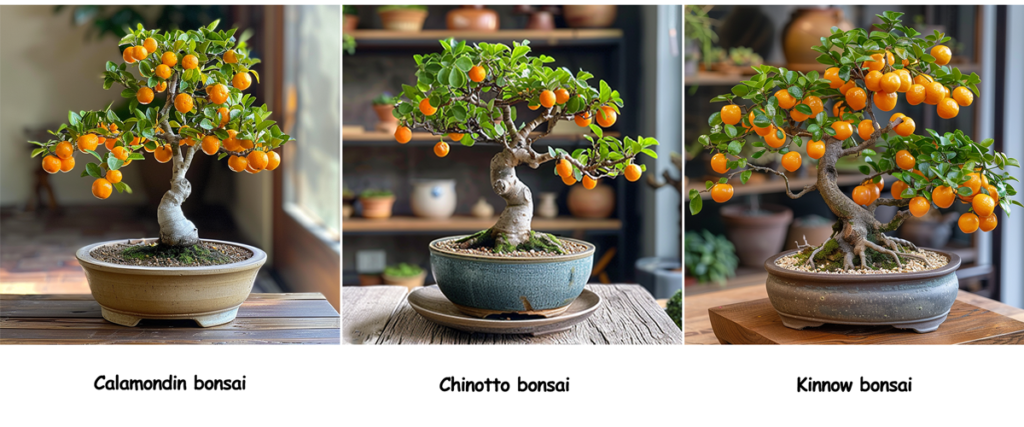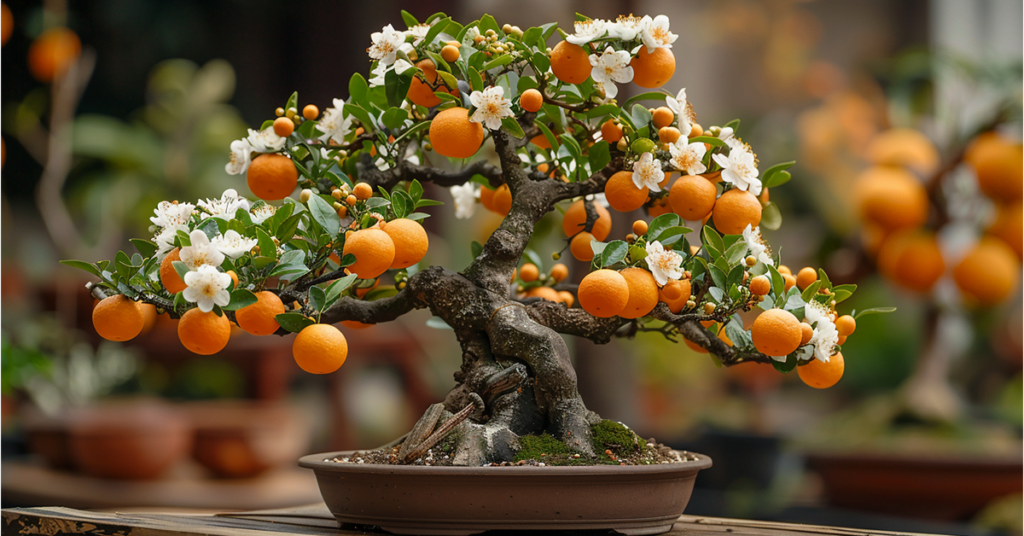The ideal combination of attractive plant and fruit tree is found in bonsai orange trees. These little citrus trees are a beautiful complement to any house or garden. Everything you need to successfully cultivate and maintain a bonsai orange tree will be covered in this article.
Selecting the Right Orange Tree Variety for Bonsai

The first step is choosing an appropriate orange variety suited for bonsai growing. Some of the most popular choices include:
- Calamondin – A cross between a mandarin and kumquat, producing small, tart oranges.
- Chinotto – An ancient Italian variety with sour, bitter fruits.
- Kinnow – A hybrid mandarin with excellent flavor and easy to maintain as bonsai.
You can opt for either dwarf varieties naturally suited to staying small, or standard orange trees that can be trained into bonsai form. Indoor bonsai citrus trees typically do better with dwarf or semi-dwarf varieties.
Setting Up the Bonsai Orange Tree Environment

Like other citrus bonsai trees, orange bonsai need lots of direct sunlight – at least 6 hours per day. They thrive in warm temperatures between 65-80°F during the day and 55-65°F at night. Humidity of 50-70% is ideal.
Use a well-draining bonsai soil mix containing components like akadama, pumice, lava rock and some organic matter. The pot should have drainage holes and be 1/3 the height of the tree.
For more details on creating the ideal soil mix, consider our guide on mastering the art of bonsai tree care.
Bonsai Orange Tree Potting and Repotting
Repotting is typically needed every 2-3 years in the early spring before new growth appears. Here’s a step-by-step repotting guide:
- Prepare a new bonsai pot and fresh soil mix.
- Remove the tree from its current pot, cleaning off any old soil from the roots.
- Prune back the roots by up to 1/3 with sharp scissors.
- Position the tree in the new pot and fill with soil, tamping it down lightly.
- Water thoroughly after repotting.
Root pruning helps maintain the miniature size and encourages new feeder root growth.
Bonsai Orange Tree Pruning and Training
Regular pruning is vital to control the tree’s size and shape it aesthetically as bonsai. Use sharp bonsai scissors or shears:
- Branch pruning – Remove branches that are crossing, too upright or downward facing. Cut back long branches.
- Defoliation – Removing leaves forces new buds, keeping the tree miniature.
- Wiring – Use aluminum or copper wire to position and hold branches in place as they grow.
For additional tips on shaping your bonsai, explore our comprehensive guide on cultivating the beauty of cherry blossom bonsai.
Bonsai Orange Tree Styling
Through selective pruning and wiring, bonsai orange trees can be trained into classic bonsai styles:
- Formal upright – The classic bonsai shape with a straight, tapering trunk.
- Informal upright – Has a curved, more natural appearing trunk line.
- Semi-cascade – Where the trunk and branches drape over the pot’s edge.
Start with the desired bonsai style in mind and prune/wire the tree to achieve that form.
Watering a Bonsai Orange Tree
The small soil volume in bonsai pots means trees need frequent watering – sometimes daily in warm months. The soil should be kept moist but not soaked.
Signs of underwatering include wilting leaves and dry, cracked soil. Overwatering leads to yellow leaves, leaf drop and fungal issues. Always check soil moisture before watering.
In general, water whenever the soil surface begins to dry out, using a watering can or hose to slowly saturate the entire soil mass.
Feeding and Fertilizing Bonsai Orange Trees
Bonsai trees have high nutrient needs to support vigorous growth in their small containers. An organic fertilizer supplemented with micronutrients is ideal for soil application.
During the growing season, fertilize every 1-2 weeks with a balanced liquid fertilizer like fish emulsion or seaweed solution. Slow-release pellets can be used alongside liquid feeds.
In winter months, cut back on fertilizing but provide low nitrogen feeds to promote flowering and fruiting.
Common Bonsai Orange Tree Pests and Diseases

Like other citrus, orange bonsai can be susceptible to insect pests like aphids, scale, spider mites and fruit flies. Use insecticidal soaps, neem oil or biological pest control.
Fungal issues such as leaf spot, root rot or sooty mold can arise from overwatering or poor air circulation. Treat with an appropriate fungicide and improve growing conditions.
The best defense is providing proper care, quarantining new trees, and regularly inspecting for early signs of problems.
Getting a Bonsai Orange Tree to Fruit

With the right conditions, even miniature bonsai orange trees can produce a seasonal crop of petite, edible citrus fruit!
To encourage flowering and fruit set, the tree needs:
- Ample sunlight and warmth
- Slight drought stress before bloom
- Hand pollination by transferring pollen between flowers
As fruits develop, very light pruning prevents excess strain on small branches. Thinning some fruits will produce larger, higher quality citrus.
Care Tips for Fruiting Bonsai Orange Trees:
- Increase fertilization during fruit development
- Provide consistent moisture once fruits start sizing up
- Support heavy branches with a bamboo stake or wire
- Harvest ripe oranges promptly to discourage pests
With patience, the right techniques, and consistent care, you can enjoy an up-close look at the amazing fruit production cycle on your very own miniature orange bonsai tree!
Conclusion
Growing a bonsai orange tree is an incredibly rewarding experience that combines aspects of gardening, horticulture, and living art. While it requires commitment to perfecting techniques like pruning, wiring, and specialized irrigation, the results are striking bonsai specimens that may even produce a crop of tiny oranges.
By understanding the right bonsai orange tree variety, providing an optimal environment, proper training/styling, and impeccable care – anyone can take their appreciation of citrus to an entirely new level with these living, fruiting sculptures. With patience and dedication, you too can master the amazing ancient art of bonsai orange tree cultivation!





